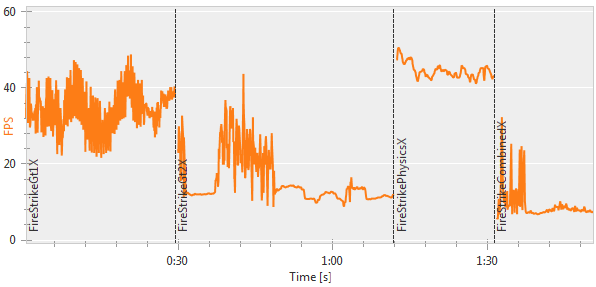AMD Radeon HD 7990 Review: The Quiet Beast
|
|
|
|
|
Fire Strike has two benchmark modes: Normal mode runs in 1920x1080, while Extreme mode targets 2560x1440. GPU target frame buffer utilization for normal mode is 1GB and the benchmark uses tessellation, ambient occlusion, volume illumination, and a medium-quality depth of field filter. The more taxing Extreme mode targets 1.5GB of frame buffer memory and increases detail levels across the board. Extreme mode is explicitly designed for CrossFire / SLI systems. GT 1 focuses on geometry and illumination, with over 100 shadow casting spot lights, 140 non-shadow casting point lights, and 3.9 million vertices calculated for tessellation per frame. Only 80 million pixels are processed per frame. GT2 emphasizes particles and GPU simulations. Tessellation volume is reduced to 2.6 million vertices, but the number of pixels processed per frame rises to 170 million. |



We're posting these 3DMark Fire Strike scores to show you how the Radeon HD 7990 performed in our test right, but there is a BIG caveat to mention. If you look closely at the individual test results, you'll notice that the Radeon HD 7990's performance did not scale properly in Graphics Test 2 (GT2). As such, the card's overall score is dragged way down from its expected level. AMD's internal data suggests the Radeon HD 7990 should score about 5854 points in the Fire Strike Extreme Test, with a GPU score of 6287. The drivers we were provided with the card, however, did not scale properly. And we confirmed with another publication that they had issues with this test as well. Without properly scaling, the Radeon HD 7990 performs about on part with a GTX Titan here, but trailed the GTX 690.
This issue should be resolved with a future driver update.







